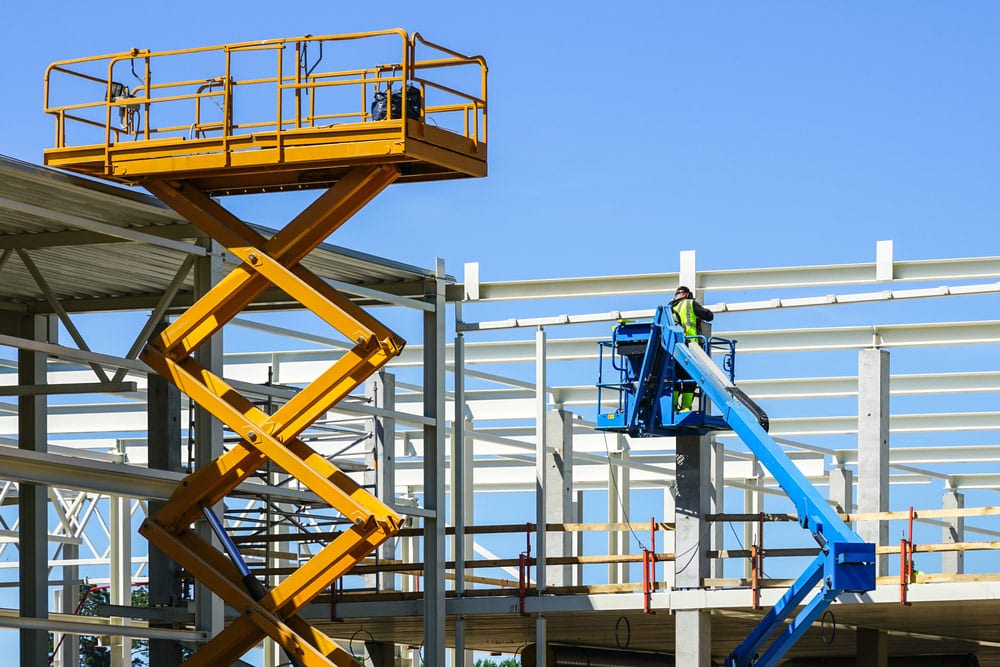
5 Safety Tips For Using Access Equipment On-site
- Post author:Hire Pro
- Post published:October 1, 2024
- Post category:Access Equipment
Have you ever witnessed a near-miss on-site because safety precautions weren’t followed with access equipment? Access equipment, such as scissor lifts and boom lifts, is critical for ensuring jobs at height are completed efficiently. However, these tools can become dangerous when proper safety measures are not taken. Whether you’re a site manager or a construction professional, prioritising safety is essential to avoid accidents, downtime and costly repairs. Here are five safety tips for using access equipment on your construction site.
1. Ensure Equipment Is Well-maintained
Reliable access equipment starts with proper maintenance. A reputable equipment company will make sure all equipment, from scissor lifts to boom lifts, undergoes regular, thorough maintenance to ensure optimal performance and safety. Professional technicians check the equipment, ensuring it meets safety standards before it arrives on-site. This proactive approach helps prevent unexpected issues, allowing you to focus on the job at hand with confidence.
Tip: Always ensure that your hire equipment comes from a provider committed to ongoing maintenance and safety checks, like Hire Pro.
2. Use Proper Personal Protective Equipment (PPE)
Even the best-maintained equipment can’t offer total protection without the right personal protective gear. Workers operating access tools should always wear appropriate PPE. This includes a hard hat, gloves, safety boots, high-visibility vests and, depending on the job’s height, fall-arrest systems like harnesses. PPE provides an essential layer of protection against falls and other site hazards.
Tip: Ensure your team undergoes regular PPE checks to make sure their gear is in optimal condition and fits properly.
3. Stick To Weight Limits
Each piece of access equipment comes with specific load ratings. Exceeding the recommended weight limits can destabilise the equipment, leading to dangerous tip-overs or equipment failure. When calculating the weight, include both the operator’s weight and any tools or materials being carried. Pay particular attention to weather conditions, as strong winds can reduce the maximum safe operating weight for elevated platforms.
Tip: Always double-check the manufacturer’s load guidelines and keep detailed logs of equipment use to avoid overloading.
4. Maintain Clear Communication
One of the most overlooked aspects of site safety is communication. It’s crucial to establish clear communication channels between workers operating access equipment and ground personnel. Hand signals, radios or designated spotters can ensure that equipment is being used safely and efficiently. This is especially important when operating in high-traffic areas where visibility may be compromised.
Tip: Hold regular safety briefings and ensure your team understands the communication protocols before using access equipment.
5. Keep The Work Area Clear & Stable
The safety of access equipment doesn’t just depend on the machinery itself but also on the environment in which it’s being used. Ensure the ground is stable and free from debris or obstacles that could cause instability. For mobile equipment like scissor lifts, make sure the area is free of overhead obstructions and for scaffolding, verify that it is erected on solid, level ground.
Tip: Always assess the surrounding environment before moving or operating access tools. Site managers should regularly check for hazards that could compromise equipment stability.
Prioritise Safety With Reliable Access Equipment Hire
Maintaining a safe working environment with access equipment on-site isn’t just about compliance—it’s about protecting your team and ensuring the job gets done without incident. At Hire Pro, we provide premium access equipment hire on the Gold Coast, including a wide range of well-maintained tools like boom lifts, scissor lifts and scaffolding. With our reliable equipment and safety-first approach, we help you focus on what matters most. Contact us for trusted solutions that help you stay safe and compliant on the job.







